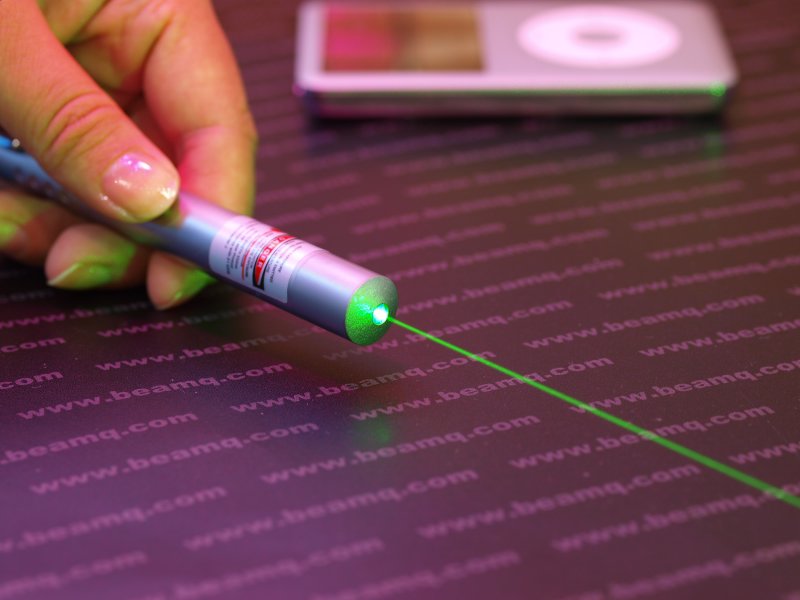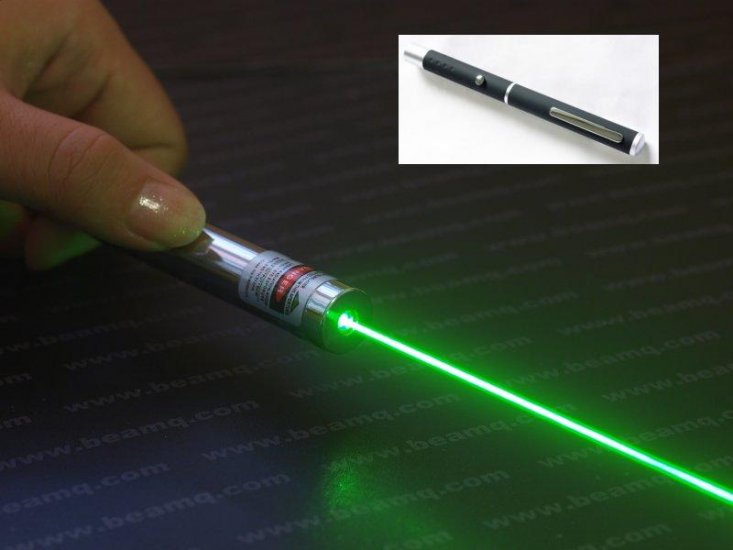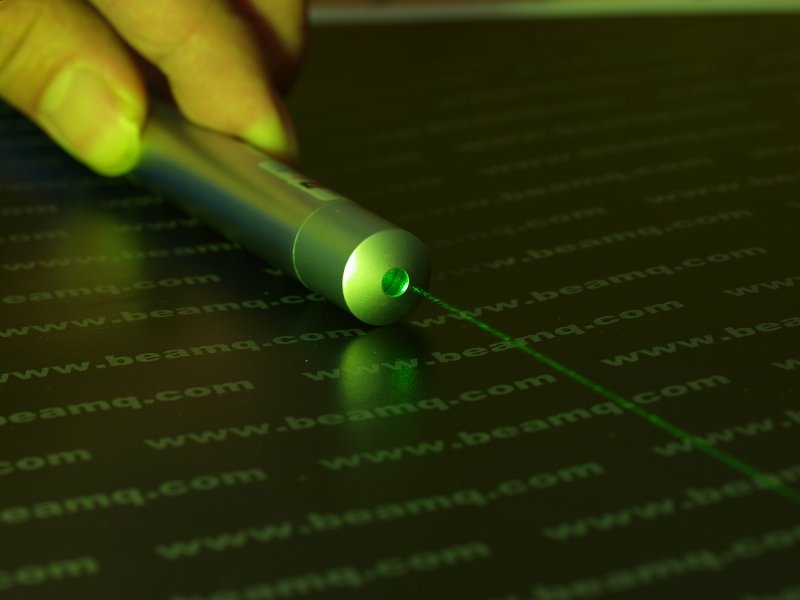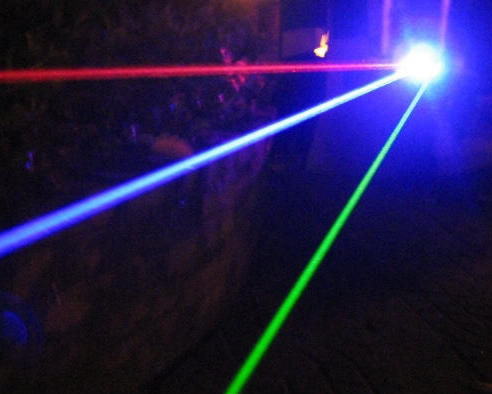BeamQ Blu-ray Laser Pointers , Cheap Laser Pointer
The Blu-ray Disc (BD), as well the special recorders and players that read and/or write to the new format, are for simplicity's sake all referred to as Blu-ray. The technology was jointly developed and standardized by the Blu-ray Disc Association (BDA), the industry umbrella organization comprising leading computer, consumer electronics and media makers Apple, Sharp, JVC, LG, TDK, Pioneer, Philips, Mitsubishi, Panasonic Samsung, Dell, Hitachi, HP, Sony, and Thomson.
Those of you who have not been following this "tech saga" may think the road to a "next-generation optical disc format" was smooth and straight. Not so. In fact, when the first movie titles were released on Blu-ray, in June of 2006, the press reported it as an attempt to catch up to HD-DVD, its rival and the market leader at the time. Home Media Retailing reported it this way:
As rival HD-DVD continues to make headway in the market, Blu-ray Disc, the next-generation optical-disc format supported by the lion's share of studios and consumer electronics manufacturers, makes its long-awaited - and oft-delayed - debut this week.
The first batch of seven Blu-ray titles, all from Sony Pictures Home Entertainment, [is] scheduled to arrive in stores June 20. The first set-top Blu-ray player, from Samsung, is slated to go on sale June 25.
Of course, HD-DVD is nowhere to be found anymore, and Blu-ray stands alone as the new "next-generation" technology that empowers consumers to record, rewrite and play HD (high-definition) video. Even more, it offers huge amounts of storage space, more than five times as much as a standard DVD at 25GB on a single-layer disc, 50GB on a dual. This phenomenal capacity is matched by the high-quality, advanced video and audio "codecs" (compression/decompression processes) that deliver an unprecedented viewing and listening experience.
The color counts
At the time of Blu-ray's introduction, optical disc recorders writing such formats as DVD, DVD卤R, DVD卤RW and DVD-RAM all used red lasers for reading and writing data. The new Blu-ray technology uses a blue-violet laser, however, which is how it got its name. Because a blue-violet laser has a shorter wavelength (405nm, nanometers, or billionths of a meter) than a red one (650nm), the device can focus the laser much more precisely.
Manufacturing methods and material preparation continue to improve, as well, but it is the blue-violet laser's precision that enables it to "pack" more data in less space. The original optical disc, the CD, maxed out at 800MB, whereas the later DVD was able to get 4.6GB on one layer and 9GB on two. With the different colored laser and the other new processes, a BD can now hold 25GB/50GB. Engineers at Pioneer and other BDA member firms have reportedly push the storage capacity of a BD to 500GB and beyond, on one disc, by using as many as 20 layers.
The future is bright
Over 200 leading computer, consumer electronics, music, recording media and video game companies support the Blu-ray format. It also has solid support from the major Hollywood studios and the vast majority of the smaller ones. Blu-ray is the heir apparent to today's reigning DVD format, and many studios have taken to releasing feature films on BD "day-and-date" with DVD (Hollywood code for "at the same time"). Every month sees new titles released in this stunning new format, and the catalog of classic films is also growing steadily. The Internet is awash with sites and information about Blu-ray movies, from dedicated Blu-ray "movie review" pages that preview new and upcoming Blu-ray releases, to simple but comprehensive lists of what movies are presently available in the BD format.
As with any new technology, the first BD players were pricey. The very first unit debuted on June 25th, 2006, from Samsung. Its retail price tag was a staggering $999.99. The world was ready for the technology, however, as several generations of buyers have now grown up with digital technology. The comfort factor is high, the "technoliteracy" level is, too, and everyone seems to like a gorgeous, lifelike, color picture on the screen and surround sound over the speakers. This initial acceptance led to a rapid reduction in retail cost, of course. In February 2009, less that three years after the first unit rolled out at a thousand-dollar price point, tech news website DigiTimes reported the following:
Following an intensive price war to promote sales of Blu-ray Disc (BD) players amid international brands in the US and European markets prior to Christmas 2008, white-box vendors are likely to offer BD player models for sale at US$150 in 2009, according to the Chinese-language newspaper Economic Daily News (EDN).
In addition to white-box vendors, Lite-On IT, the largest Taiwan-based maker of half-height optical disc drives, plans to offer BD players also for sale at about US$150, EDN indicated.
Five million BD players were sold around the world in 2008 and the sales volume for this year will increase to 11 million units, EDN quoted [a] forecast by Taiwan-based Topology Research Institute as indicating.
The fact is, there are much greater advances in store for the future, with optical technology, flash memory, processors and all manner of other marvels. Blu-ray is no longer on the horizon, it is up close and personal, and can be in your living room for half the cost of the entry-level iPhone.
Blu-ray is only "the technology of the future" in a comparative sense, inasmuch as it is the closest thing to the future we now have, and incorporates advances that will certainly be integral parts of future devices that are now on the drawing board. Think of it this way: Considering how incredible the Blu-ray technology is, and how quickly such state-of-the-art capability got to the $150 price point, the devices coming off those drawing boards in the next year or two will be absolutely incredible!
Read it here
2009-04-03
Subscribe to:
Post Comments (Atom)




No comments:
Post a Comment